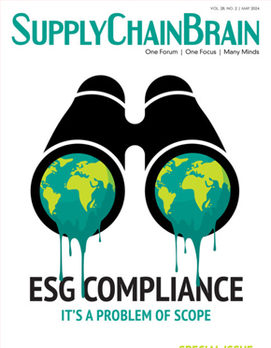
With the first winter weather of the coronavirus pandemic bearing down across the U.S., shippers are looking to ensure their supply chains aren't further disrupted by freezing temperatures.
Shippers may face challenges protecting vulnerable products from freezing this winter, with predictions calling for a cold, snowy winter in the northern half of the country.
As the temperature drops, shippers must take steps to "winterize" their supply chains to protect shipments from damage. Products ranging from beverages to water-based paints, wood stains, paint thinners, water-based adhesives and pharmaceutical products are all more vulnerable to extreme weather, and can potentially be damaged or ruined if not properly stored and transported during the coldest months of the year.
When selecting a transportation provider to winterize their supply chain, shippers should not only consider the provider’s rate of on-time deliveries, service area and solutions, but should also ensure that the provider offers shipment freeze protection.
There are several key considerations for shippers to to keep in mind, to ensure that their products are protected from origin to destination during the coldest months of the year.
When selecting a carrier to handle freezable shipments, it’s important to look for transportation providers with genuine and comprehensive freeze-protection services. Both suppliers and buyers need to protect their bottom lines, and freeze protection is a vital component of that during the winter months.
It’s also essential to build a relationship with the selected carrier year-round, not just during the freezable shipment season. This can help to establish a clear understanding of expectations, and provide insight into the carrier’s credibility based on year-round performance, rather than just during the winter.
Three Vital Factors
Not all freeze protection programs are created equal. A carrier with true protecion from freeze capabilities invests in appropriate infrastructure, uses technology and focuses on training and accountability.
Infrastructure. Some transportation companies don’t have heated equipment and facilities, and simply use thermal blankets to prevent freight from freezing. These providers must constantly move freight in order to keep products from sitting still for too long, increasing the risk of shipments not only freezing but being damaged in the process.
A carrier that values freeze protection makes appropriate investments in infrastructure and equipment to include heated trailers, docks, service centers and warehouse facilities, as well as specialized dock training and temperature-sensitive load planning software to protect every shipment. This infrastructure eliminates the need for a transportation provider to embargo freight or refuse pickup during extreme conditions. Freight embargoes delay shipments for extended periods, and prevent freight from moving when it could.
Winter weather often adversely impacts road conditions and equipment, making safety measures an important consideration in selecting a transportation provider. Shippers should select providers that invest in top-of-the-line safety equipment and systems such as on-site snow removal equipment, which can quickly and safely remove accumulated snow/ice from trailer roofs.
Technology. A carrier that uses technology for optimized routing and shipment visibility from the time of pickup through delivery allows shippers to track shipments from origin to destination, giving them peace of mind that their shipment is on track and moving smoothly.
Customer-facing technology, including web portals which provide customers with up-to-the-minute shipment tracking and the ability to communicate directly with the pickup and delivery driver, are also important for receiving advanced arrival and delivery notification. This prevents any lag time in getting your shipment to a secure location.
Training and accountability. These are key factors in carrier protection of freezable freight. The most effective carriers embed training into every aspect of their operations, including training customer service representatives to provide accurate and timely information, and drivers and dockworkers on top-notch safety practices for monitoring their equipment and handling freezable products.
Accountability is also important. Look for a carrier that proactively shares its freezable results, including the number of freezable shipments transported and the percentage of these shipments that were delivered damage-free.
The probability of finding a carrier with heated trailers as winter weather hits is slim, as most transportation providers set their capacity for their normal customer base in advance.
When it comes to transporting and storing freight vulnerable to freezing during the winter months, it’s in the entire supply chain’s best interest to plan well ahead of the winter season. This means partnering with transportation providers that offer genuine freeze-protection programs, including heated trailers, loading docks, warehouses, and service centers that protect products from freezing or being damaged due to bitter cold.
Shippers that plan for the future will also ensure they select a transportation partner that best suits their needs and offers quality customer service and results.
Supply chains experience a unique set of challenges in the Northeast, including the impacts of traffic congestion and weather. To protect their products during the winter season, shippers should partner with a transportation provider experienced in their respective region, and possessing the right equipment, infrastructure, and personnel to ensure that temperature-sensitive shipments are protected from origin to destination.
John Luciani is chief operating officer of LTL solutions at A. Duie Pyle.







